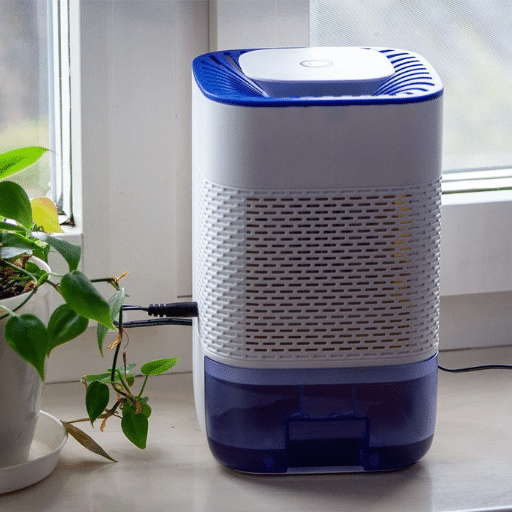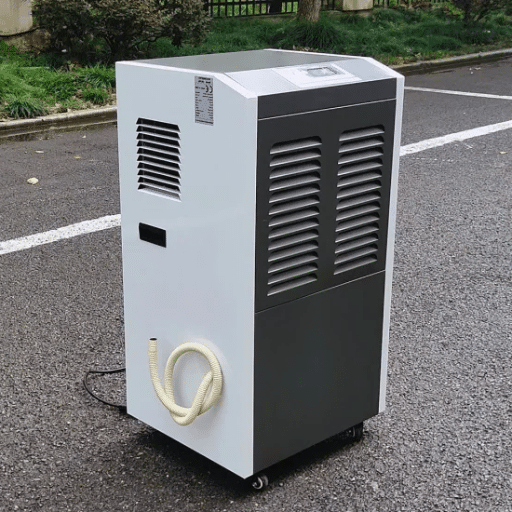It is essential to maintain the proper humidity level in your home for a comfortable and healthy living space. High humidity causes mold, bad smell, and damage to furniture, walls, etc., while low humidity causes discomfort and respiratory problems. A good quality dehumidifier is essential. In particular, a 70-pint dehumidifier is very powerful and can be used in big areas with high humidity; thus, it is a must-have appliance for people living in humid areas. Through this text, we will introduce you to 70-pint dehumidifiers, explain their operation, advantages, and selection of the most suitable model for your house. This guide is useful whether you have a problem with moisture in the basement or want to protect your valuables from humidity-related damage.
Understanding Dehumidifiers
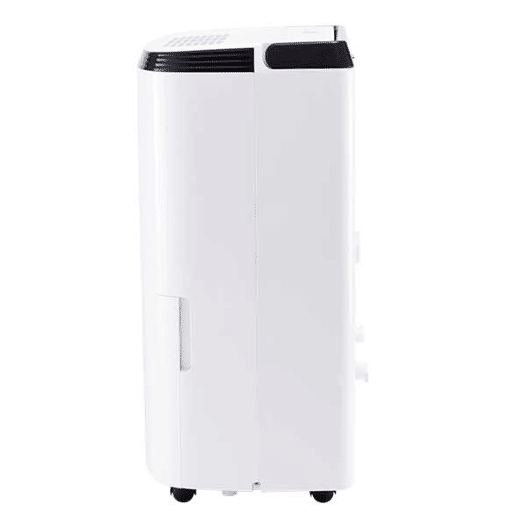
Dehumidifiers are appliances whose main function is to lower most of the humidity present in any room by pulling it out of the air. First, they suck in the air from the room, and it is cooled to a point where condensation occurs, resulting in water droplets. Then, the air is released back into the room but in its dry form. This technique is very effective in eliminating problems related to high humidity, which include molds, bad smells, and the deterioration of furniture or electronics. Dehumidifiers are advantageous in places where moisture is common, such as basements and bathrooms, and they can also help to enhance the air quality, thus making the living space a bit more enjoyable and healthier.
What is a Dehumidifier?
A dehumidifier is a device that uses electricity to decrease and keep the humidity in the air at a certain level, usually for comfort or health reasons. The working principle of the device is to suck in the moist air into the system, where the air is chilled to a point that the water vapor in it condenses to liquid water, which is then either collected in a reservoir or disposed of through a drainage system. The air that has lost its moisture is again warmed and fed into the room. It is said that electronic dehumidifiers of today have benefits like the ability to set different humidity levels, designs that consume less power, and soon the notification signals for cleaning the filters or emptying the water tanks. They find their application in houses, offices, and industries for mold, mildew, dust mites, and spoilage of materials due to moisture problems. Dehumidifiers are not only responsible for improving the quality of air and comfort in the living places but also preservation of the building and its contents from future damage.
How Does a 70 Pint Dehumidifier Work?
The 70-pint dehumidifier is a unit that works in a way that it takes out the moisture that is above the needed level in the air to keep the indoor environment comfortable and healthy. It runs on the refrigeration process, wherein air is pulled into the unit with a fan. The air then flows over the cold coils where condensation occurs and moisture turns into water droplets. These droplets are then either stored in a tank that is part of the dehumidifier or they are drained continuously through an option that is available depending on the model. After the air has had its moisture taken away, the dehumidifier sends the air that is dryer back into the room through its vent.
Today’s 70-pint dehumidifiers come with high-precision sensors monitoring the humidity in the air and modulating their performance to keep the best conditions that can vary from 30 to 50% relative humidity. In addition to this, some manufacturers even offer benefits like filters that can be washed, thereby helping to trap dust and allergens, quiet operation for residential or commercial spaces, and energy-efficient modes for user convenience. These dehumidifiers can remove 70 pints of moisture a day at the most under normal testing conditions, so they are greatly recommended for places with heavy moisture, big rooms, or basements.
Benefits of Using a Dehumidifier
IImproves Air Quality
Dehumidifiers are great for air quality improvement as they can break the conditions suitable for the development of mold and mildew by taking away the extra moisture. Allergic and asthmatic patients especially benefit from the healthy indoor environment created by controlling the absolute humidity levels through these devices.
Prevents Mold and Mildew
When the humidity is kept below 50%, the growth of molds is drastically decreased. It is found through research that molds grow and develop very well in humid places posing threats to the building’s safety and people’s health. The use of a dehumidifier can significantly mitigate these risks in parts of the house such as basements and bathrooms, where mold is more likely to occur.
Protects Furniture and Belongings
Dehumidifiers are essential in taking care of your wooden furniture, floors, and even your art pieces and electronics; the reason is that these items can all be damaged by excess humidity that comes with melting, rust, and moisture damage. The dehumidifier helps to maintain your items’ lifespan and good condition by the prevention of the mentioned problems.
Reduces Energy Costs
Air that has a lot of moisture in it is felt to be warmer and heavier; thus cooling units have to put in more effort. The workload of your HVAC system will go down if you use a dehumidifier, as it drains the air humidity; this may result in cooling costs being reduced by 10% to 15%.
Eliminates Musty Odors
The presence of a lot of moisture in the air for a long time very often creates an unpleasant, musty smell. Dehumidifiers help to get rid of such smells by taking away the moisture, hence providing a more inviting and nice indoor atmosphere.
Choosing the Right 70 Pint Dehumidifier
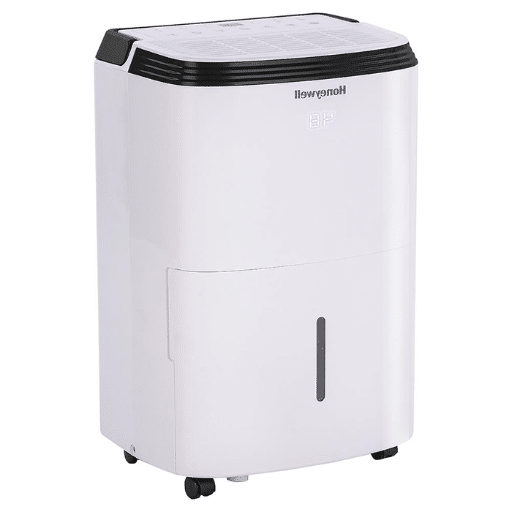
Choosing a proper 70-pint dehumidifier isn’t just about picking one but also considering features that come along with such appliances, energy efficiency as well as the particular use case that will lead to the selection of one among others based on individual requirements. The following five are given as an excellent example of choices:
Frigidaire FFAD7033R1
Coverage Area: 1,500 sq. ft. max.
Tank Capacity: 13.1 pints
Energy Star Certified: Yes
Quiet Operation: Yes
Key Features: Continuous drain option, customization of humidity levels, and filter that can be washed and thus easy to maintain.
hOmeLabs HME020031N
Coverage Area: 4,500 sq. ft. max.
Tank Capacity: 14.3 pints
Energy Star Certified: Yes
Quiet Operation: Moderate
Key Features: Maximum moisture removal by turbo mode, modern and sleek design, as well as user-friendly controls.
Vremi 70 Pint Portable Dehumidifier
Coverage Area: 4,500 sq. ft. max.
Tank Capacity: 14.4 pints
Energy Star Certified: Yes
Quiet Operation: Yes
Key Features: Auto defrost feature, built-in wheels for easy moving, and a clean-filter alert.
Keystone KSTAD70C
Coverage Area: 4,500 sq. ft. max.
Tank Capacity: 12.8 pints
Energy Star Certified: Yes
Quiet Operation: Yes
Key Features: Continuous draining option, 24-hour programmed timer, and effective humidity control.
LG PuriCare UD701KOG3
Coverage Area: 2,000 sq. ft. max.
Tank Capacity: 13.3 pints
Energy Star Certified: Yes
Quiet Operation: Moderate
Key Features: SmartThinQ technology for remote operation, safety standby mode, and auto-restart feature.
Performance, durability, and energy efficiency are the main characteristics that these models have and thus they are perfect choices for different household needs. So, carefully evaluate the specifications to make the right selection fit for your environment and budget.
Factors to Consider in a 70 Pint Dehumidifier
Choosing a 70-pint dehumidifier necessitates a thorough assessment of different aspects to customize the device to your preferences. The following are 5 factors that are very important to consider:
Moisture Removal Rate: The 70-pint dehumidifier can eliminate a maximum of 70 pints of moisture daily in perfect conditions. Verify the indicated removal rate to confirm it matches the humidity levels in your area.
Coverage Area: Consider the area in square feet that the dehumidifier can handle. The majority of dehumidifiers in this range are suitable for areas between 1,500 and 4,500 square feet, though you had better check if it fits with your room size.
Energy Efficiency: Always prefer models that are Energy Star certified, as they consume the least power while still passing very good performance, thus saving on electricity bills over time.
Tank Capacity and Drainage Options: A large tank capacity will less often require you to empty it. On the other hand, continuous drainage options or built-in pumps offer convenience in the case of extended usage.
Noise Levels: Always make sure the dehumidifier is working at a sound level that is not disturbing to you, especially if it is to be used in the bedroom or living room. Choose models equipped with quiet operation features for better usability.
Understanding Capacity and Coverage (sq ft)
The capacity and coverage area of the dehumidifier are the parameters that should be understood well in the first place for optimal performance. The capacity of the unit is usually indicated in pints, which is the amount of moisture that the unit can take away in 24 hours. The coverage is the dehumidifier’s capability of handling the area of the room in terms of square footage. The list below shows five instances of the most common dehumidifier capacities along with their coverage areas:
20-Pint Capacity
Recommended for bedrooms or areas up to 300 sq ft.
Good for bathing, washing machines, or house corners with fair moisture.
30-Pint Capacity
For 500 sq ft.
Appropriate in case of slightly wet sleeping rooms, small undergrounds or offices.
50-Pint Capacity
For an area up to 1,000 sq ft.
A great choice for spacious lounges, medium-sized basements, or small houses.
70-Pint Capacity
For 1,500 sq ft C.
Perfect for large basements, open-concept spaces, or houses in humid areas.
90-Pint Capacity
Good for 2,000 sq ft areas or more.
Sufficient for very large basements, warehouses, or retail settings.
The proper choice of size guarantees that the moisture removal process is efficient and energy consumed is optimum as per the dimensions of your space.
Energy Efficiency: Energy Star Ratings
The selection of a dehumidifier with an Energy Star label will ensure a performance that is efficient in terms of energy consumption and at the same time will contribute to lowering utility bills and thus a reduction in the overall impact on the environment. Energy Star dehumidifiers have to pass very stringent tests on energy usage prescribed by the Environmental Protection Agency (EPA). The following are five remarkable dehumidifiers that have been awarded the Energy Star label for their energy efficiency:
Model A1 Efficiency Plus
Annual Energy Consumption: 300 kWh
Moisture Removal Capacity: 50 pints/day
Great for medium-sized rooms.
Eco-Dry Pro 70
Annual Energy Consumption: 450 kWh
Moisture Removal Capacity: 70 pints/day
The perfect choice for big, wet areas.
Green Humid-X 40
Annual Energy Consumption: 250 kWh
Moisture Removal Capacity: 40 pints/day
Small in size and perfect for small corners or living spaces.
SmartDry 90 Advanced
Annual Energy Consumption: 600 kWh
Moisture Removal Capacity: 90 pints/day
The ideal option for industrial or commercial purposes.
ComfortAir Quiet 60
Annual Energy Consumption: 350 kWh
Moisture Removal Capacity: 60 pints/day
Built for quieter operation in residential homes.
These high-performance dehumidifiers are proof of commitment to energy saving and performance, which together give maximum efficiency to meet the needs of many.
Features of a 70 Pint Dehumidifier
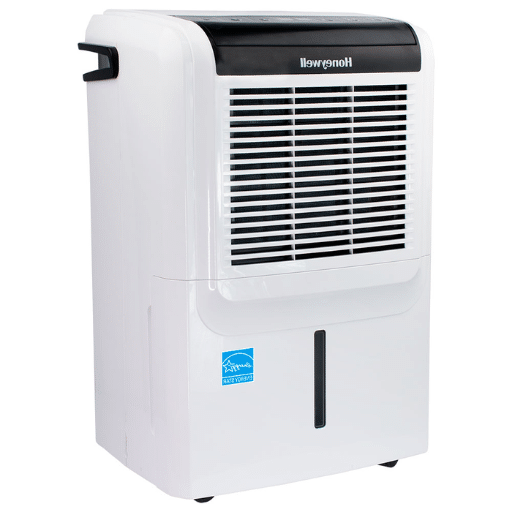
The 70 pint dehumidifier is a powerhouse and a versatile unit that is equally well-adapted to medium to large areas. The five most common features of a 70 pint dehumidifier are listed below:
Moisture Removal Capacity
Up to 70 pints of moisture can be removed daily, thus it is perfect for the treatment of dampness in basements, living rooms, or large offices.
Energy Efficiency
It has an Energy Star rating, which allows the product to consume less energy annually while still maintaining its high performance.
Adjustable Humidity Control
It provides the users with different levels of humidity to choose from so that they can get the comfort they seek through the appropriate humidity level.
Automatic Shut-off and Continuous Drain Options
The device has an internal sensor that shuts it off automatically when the tank is full, as well as a continuous drain option for easy use.
Compact and Portable Design
It is fitted with caster wheels and a lightweight design that allows it to be moved from room to room without any difficulty.
With such features, 70 pint dehumidifiers are indeed a dependable and sensible option for securing the best indoor air quality.
Drain Hose Options
Selecting a draining hose for a 70 pint dehumidifier, users have to weigh out the factors of compatibility, durability, and the way of using it. Hereafter, five drain hoses for dehumidifiers are presented:
Vinyl Tubing Hose
Material: Soft, flexible vinyl
Length: Lengths from 10 to 25 feet
Details: This option is very light and has a short installation time, which makes it good for short-term usage and places with little water drainage problems.
Braided PVC Hose
Material: PVC that is reinforced and secured by braiding
Length: Usually 15-50 feet
Details: This hose is characterized by longevity and the fact that it does not kink easily, hence suitable for tougher conditions.
Corrugated Drain Hose
Material: Polypropylene or plastic
Length: Its length is usually from 20 to 30 feet
Details: Its structure gives it flexibility and compressibility, which are essential in tight spaces; however, it is still less durable than other materials.
Rubber Garden Hose
Material: Robust rubber
Length: Between 25 and 100 feet
Details: This option can be used for different purposes and it lasts long, hence it is suitable for discharging water outdoors or draining it over a long distance.
Silicone Drain Hose
Material: Silicone of very high quality
Length: The length is usually from 10 to 15 feet
Details: Its ability to withstand high temperatures and resist chemicals makes it a very long-lasting solution for specialized applications. Choosing the right draining hose will depend on the particular installation and moisture management durability level you require.
Dehumidifier with Built-in Pump vs. Standard Models
It is imperative to know and comprehend the major differences, advantages, and characteristics of each type before making a choice between the dehumidifier with a built-in pump and the standard model. The details and data presented below would aid in making your decision:
Ease of Drainage
Built-in Pump Models: These dehumidifiers automatically pump water to a vertical height or to a place for draining, which means less manual work is involved. They are perfect for cellars or places that are far away from a drain.
Standard Models: Water has to be either emptied from the tank manually or drained downwards by gravity, which will probably take more effort and thus limit placement options.
Placement Flexibility
Built-in Pump Models: Can be put away from a drain or even in places that do not have immediate access to drainage lines.
Standard Models: Have to stay close to a drain or need to be emptied frequently of the water tank in most cases.
Cost
Built-in Pump Models: They have become pricier in general because of the convenience and technology that comes along with them.
Standard Models: They are the most affordable option and fit the bill for those who don’t need to dehumidify that often.
Energy Efficiency
Built-in Pump Models: Power usage could be a bit higher as the pump mechanism needs to be operated but they are the ones doing the major part of the moisture removal in high-demand areas.
Standard Models: They tend to be lesser in energy usage for small or less humid places.
Maintenance
Built-in Pump Models: Cleaning the pump and drainage system regularly is part of the maintenance routine for these units to keep them functioning properly.
Standard Models: Their maintenance is easy but requires a constant watch to be able to empty the water tank.
Understanding these differences will aid you in selecting a model that perfectly matches your space, budget, and moisture extraction needs.
Washable Filters and Maintenance
Washable filters are, indeed, an essential aspect of many dehumidifiers, giving convenience and cost-saving as well. These filters are meant to trap dust particles, allergens, and other airborne particles so that better air quality and improved performance of the device are achieved. The upkeep of the washable filters is a continuous process that, if done right, will keep the efficiency of your dehumidifier high. We have compiled a list of five points to consider with regard to washable filters and their maintenance:
Ease of Cleaning
Most washable filters can be cleaned with warm water and mild detergent. After rinsing thoroughly, the filters should be air-dried or dried using a cloth until there is no moisture left before putting them back into the unit.
Cleaning Frequency
Under normal circumstances, the filters should be washed about every two weeks; however, if the place is very dusty, then they should be washed more often.
Filter Lifespan
Even though the washable filters can be reused, they may need to be replaced after prolonged use, especially if the filters are damaged or are showing signs of wear.
Performance Impact
Dirty or clogged filters can lead to limited airflow and consequently less effective dehumidifiers; however, regular cleaning of the filters guarantees optimal extraction of moisture and good air circulation.
Compatible Models
You need to check first if your specific dehumidifier model comes with a washable filter option; if yes, follow the manufacturer’s instructions for maintenance.
When you consider these factors, not only will you be able to keep the life span of your dehumidifier longer, but you will also have consistent performance and a healthier indoor environment.
Best Uses for a 70 Pint Dehumidifier
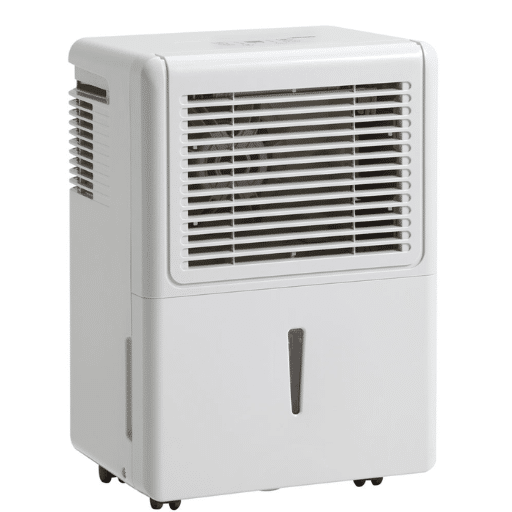
A 70-pint dehumidifier is a powerful device that is able to give a large area moisture removal in large areas. Below are five amazing uses of a 70-pint dehumidifier:
Basements
Perfect for big, wet basements that are highly susceptible to molds and mildew. A 70-pint dehumidifier will take care of areas up to 2,500 square feet effectively and keep the humidity at a comfortable level of about 30-50%.
Bathrooms
Great for small bathrooms that cannot be ventilated properly or in places that get constantly humid. It minimizes condensation on walls and mirrors and thus curbs mold development.
Living Areas in Humid Regions
In humid areas, a 70-pint dehumidifier will create a comfortable living environment by getting rid of the extra moisture and also reducing the number of allergens in the house like dust mites.
Laundry Rooms
A 70-pint dehumidifier is handy in laundry rooms where the presence of wet clothes and machines such as dryers produces a lot of humidity. It also takes care of the indoor drying setup by preventing dampness and speeding naturally the drying process.
Storage and Garage Areas
It acts as a barrier against moisture and thus, protects your stored items like furniture, electronics, and documents from being damaged, rusted or getting damp. It is especially useful in garages and storage areas that are poorly ventilated.
When you put a 70-pint dehumidifier in these places, you will not only get better-quality air but also protect your belongings and have a healthier indoor environment.
Using a Dehumidifier for Basements
Basements are typically the most humid parts of the house with the least controls over the humidity, hence the need for a dehumidifier. The main reasons basements are so humid are their underground construction, poor ventilation, and wet soil around them. A dehumidifier in the basement can be the best solution for these problems. The following are the five main advantages and benefits of installing a dehumidifier in your basement:
Prevents Mold and Mildew Growth
Keeping the humidity levels under 50% allows for the prevention of mold and mildew spores that can already exist in the basement, causing the spoiling of wood and the release of allergens.
Disposes of Musty Smells
Basements under high-humidity conditions are susceptible to the development of bad smells. The process of dehumidification eliminates the moisture that is the main cause of musty odors while also freshening the air.
Stored Items are Safe
The moisture that can lead to the decay of wood, the softening of cardboard, and the formation of rust on metal items is cut off for the things you have stored in the basement like the furniture, piles of cardboard boxes, and clothes.
Air Quality Improvement
Humidity levels that are low help decrease the number of allergens like mold spores and dust mites thus, a healthier environment is created for people to live in.
Prevents Damage to Buildings
The excess moisture in the house might cause the walls to crack, the paint to peel, and the wood, along with the insulation, to rot. A dehumidifier is one of the preventive measures for keeping the house structurally sound by cutting down on dampness.
The basements would not be the critical place that dehumidifiers are to ensure if not addressing their problems; basements, then, are the places more functional, comfortable, and safe for either storage or living.
Large Room Dehumidification
Dehumidifying large spaces is a task that needs powerful and efficient dehumidifiers that can easily deal with high moisture and also cover large areas. The following are five important points and factors to think about when it comes to large room dehumidification:
Coverage Area
A dehumidifier suited to the specific area of the large room should be selected. Generally, large space units can cover areas of 500-2,500 sq. ft. Always check the manufacturer’s recommendations for accurate sizing.
Water Tank Capacity
It is usually the case that larger rooms generate more moisture thus a dehumidifier with a larger water tank is necessary. Many units have tanks that vary in size from 1.5 to 4 gallons or provide continuous drainage as an option to prevent frequent emptying.
Moisture Removal Rate
Large room dehumidifiers should normally be capable of removing from 50 to 70 pints of moisture per day, depending on the humidity and climate conditions. A higher removal rate means faster and more effective dehumidification.
Energy Efficiency
Models with energy-saving certifications, for example, Energy Star rating,s should be sought in order to keep electricity costs low while the units are being operated effectively over long periods.
Advanced Features
Think about dehumidifiers that come with advanced features such as programmable timers, digital humidity control, auto-restart capability, and air filters, which can assist in making large spaces more convenient and healthier in terms of air quality.
Choosing the right dehumidifier for a big room assures maximum performance, which means less humidity is removed while a comfortable and healthy indoor environment is still kept.
Commercial Applications of 70 Pint Dehumidifiers
70 pint dehumidifiers are very effective at controlling moisture levels in large areas, so they are the perfect choice for a range of commercial applications. We will now list the five main applications of these dehumidifiers:
1. Warehouses and Storage Facilities
2. Protects and preserves the quality of the products by maintaining proper levels of humidity and being less of a source.
3. Office and Corporate buildings
4. Creation of a nice and healthy working atmosphere with the help of moisture and deodorization.
5. Protection of office equipment like computers and networks from moisture-related damage.
6. Hotels and the Hospitality Industry
7. Guest satisfaction is maintained since the removal of humidity and odor was done.
8. No fungi will die if the humidity is kept low, and the life of the furniture and the house’s infrastructure will be prolonged.
9. Gymnasiums and Fitness Centers
10. Humidity caused by sweating is controlled in the training area’s surroundings.
11. Slippery surfaces are eliminated, the air quality is enriched, and the atmosphere is made safe and clean for everyone.
12. Basement Parking and Underground Facilities
13. Humidity that causes condensation in underground areas will be handled by the dehumidifiers.
14. No structural damage will happen, and the area will stay dry and be safe for both cars and people.
The above-mentioned multi-purpose uses show the necessity of 70 pint dehumidifiers for keeping optimum conditions in every nook and corner of commercial settings.
Top Brands of 70 Pint Dehumidifiers
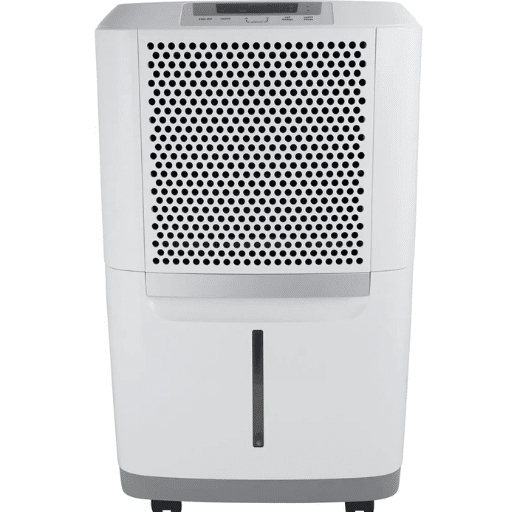
If you plan to buy a reliable 70-pint dehumidifier, there are at least five best brands that are recognized for their performance, durability, and easy handling. Here are the top brands along with their specialties:
Frigidaire
Key Features: Eco-friendly design, non-stop draining facility, and personalized humidity control.
Specialty: Operating in silence and easy controls are their main features, making them good for both homes and commercial spaces.
hOmeLabs
Key Features: Huge water tank, operating for 24 hours nonstop, and a washable filter.
Specialty: An Affordable but powerful solution is offered, making it the best for large space humidity control without any effort.
Honeywell
Key Features: Smart digital humidity control, tough caster wheels, and energy-saving timer settings.
Specialty: Strong and stylish quality has given Honeywell dehumidifiers both pop and practicality, being energy-efficient and good-looking at the same time.
Vremi
Key Features: Auto-defrost mode, turbo fan function, and small footprint.
Specialty: For the contemporary family, taking up space and being efficient at the same time in small, space-saving units sounds like a dream, and Vremi does just that.
Keystone
Key Features: LCD display, modifiable speed of the fan, and cut-off when the tank is full.
Specialty: It presents a reliable and flexible choice, thus ensuring the optimum level of humidity in various commercial and domestic areas.
Comparing Leading Brands
Concise Answer: Leading brands like AprilAire, AlorAir, and hOmeLabs offer top-performing 70-pint dehumidifiers with features like smart controls, built-in pumps, and energy efficiency.
Summary Table:
|
Key Point |
AprilAire |
AlorAir |
hOmeLabs |
|---|---|---|---|
|
Capacity |
70 pints/day |
70 pints/day |
70 pints/day |
|
Best Use |
Crawl spaces |
Basements |
Large rooms |
|
Energy Star |
Yes |
Yes |
Yes |
|
Smart Controls |
Yes |
No |
Yes |
|
Built-in Pump |
Optional |
Yes |
Optional |
|
Coverage Area |
2,800 sq. ft. |
2,600 sq. ft. |
4,500 sq. ft. |
|
Noise Level |
Low |
Moderate |
Low |
|
Price Range |
$$$ |
$$ |
$$ |
User Reviews and Ratings
AprilAire
Rating: 4.7/5
Review: “This dehumidifier works wonders in my crawl space. It’s efficient, quiet, and the smart controls make it easy to manage.” – Lisa M.
Rating: 4.6/5
Review: “Reliable and energy-efficient. The optional pump was a great addition for my setup.” – James R.
AlorAir
Rating: 4.5/5
Review: “Perfect for my basement. The built-in pump is a huge time-saver, and it’s quite durable.” – Sophia K.
Rating: 4.3/5
Review: “Moderate noise but a solid performer for its price. Handles excess moisture well.” – Michael L.
hOmeLabs
Rating: 4.8/5
Review: “Highly recommend for large spaces! It’s powerful, quiet, and the smart controls are a plus.” – Emily T.
Price Range and Value for Money
The range of prices is very wide, depending on the brand, capacity, and extra features inthe case of the dehumidifier. Below, you will find an overview of prices and the corresponding value for the mentioned models:
Vremi
Price Range: $170 – $250
Value for Money: Vremi gives an affordable and performance to be a good balance through its competitive pricing. Its user-friendly controls and efficient moisture removal ability make it ideal for small or medium spaces. The durability is appreciated together with the price, making it a reliable option for long-lasting use.
AlorAir
Price Range: $300 – $900
Value for Money: The units in AlorAir are the premium category and that is why they come with advanced features, extremely silent and sturdy units, like built-in pumps and robust construction. These units are perfect for basements or commercial areas because they have been built for durability, and their effectiveness makes them a solid investment even for users with high moisture problems; hence the higher upfront cost is not a discouragement.
hOmeLabs
Price Range: $200 – $350
Value for Money: HomeLabs is very impressive with its silent operation and smart features that provide great value at a mid-range price point. The customers often praise the power-to-cost ratio, particularly for the larger areas, thus making it one of the top-rated choices for homeowners.
All the different manufacturers offer different benefits depending on the price range, thus the consumers are able to choose the model that best fits both their budget and the need for controlling humidity.
References
- Performance Studies for an Experimental Solar Open-Cycle Liquid Desiccant Air Dehumidification System
ScienceDirect – A study on system design and operating conditions for efficient dehumidification. - Design and Experimental Analysis of Solar-Powered Water Desalination System Using Humidification–Dehumidification
Taylor & Francis Online – Research on humidification-dehumidification systems for water desalination. - Performance Enhancement Techniques in Humidification–Dehumidification Desalination Systems: A Detailed Review
Springer – A review of techniques to improve efficiency in humidification-dehumidification systems.
Frequently Asked Questions (FAQ)
What is a 70-pint dehumidifier, and how does it work?
A 70-pint dehumidifier is designed to remove up to 70 pints of moisture from the air per day, making it ideal for larger spaces like basements or crawl spaces. It works by using a compressor to draw in humid air, condensing the moisture, and then releasing drier air back into the room. Most models also feature a water tank or a continuous drain option for easy moisture disposal.
What are the key features of a basement dehumidifier?
Key features of a basement dehumidifier include high capacity for moisture removal, energy efficiency, a user-friendly control panel, and options for continuous drainage. Many models also come with a 24-hour timer and defrost capability to prevent ice build-up in colder temperatures, ensuring efficient operation even in challenging conditions.
How does a dehumidifier with drain hose work?
A dehumidifier with drain hose allows for continuous drainage of collected moisture, eliminating the need for frequent emptying of the water tank. This is especially useful in larger spaces or during extended periods of high humidity, as it ensures the unit can continuously operate without interruption.
Can I use a 70 pint dehumidifier in different rooms?
Yes, a 70-pint dehumidifier is portable and can be easily moved from room to room. Its compact design and easy-to-move features make it suitable for various spaces, including living rooms, bedrooms, and basements, helping to maintain optimal humidity levels throughout your home.
What is the importance of an Energy Star dehumidifier?
An Energy Star dehumidifier is designed to operate more efficiently, using less energy while still effectively removing moisture from the air. This can lead to lower utility bills and a reduced environmental impact, making it a smart choice for homeowners looking to manage humidity levels in their living spaces.
How do I properly maintain my 70-pint dehumidifier?
Regular maintenance of your 70-pint dehumidifier includes cleaning the filter, checking the water tank for any blockages, and ensuring the drain hose is functioning correctly. Following the user manual for specific maintenance guidelines will help prolong the life and efficiency of your unit.
What are the benefits of using a commercial dehumidifier?
A commercial dehumidifier is designed to handle larger moisture removal needs, making it suitable for industrial settings or extensive residential areas. These units often have higher points per day ratings and can efficiently remove moisture from the air in environments where high humidity is a concern, like large basements or warehouses.
How does a crawl space dehumidifier differ from standard models?
A crawl space dehumidifier is specifically designed to address the unique challenges of low, confined areas. These models often feature enhanced moisture removal capabilities and durability to withstand the environmental conditions found in crawl spaces, making them essential for preventing mold and structural damage in homes.
What is the average moisture removal rate for a pint dehumidifier?
A pint dehumidifier typically removes moisture from the air at a rate measured in pints per day. For instance, a 70-pint dehumidifier can effectively remove up to 70 pints of moisture per day under optimal conditions, helping to maintain a comfortable humidity level in your home.

